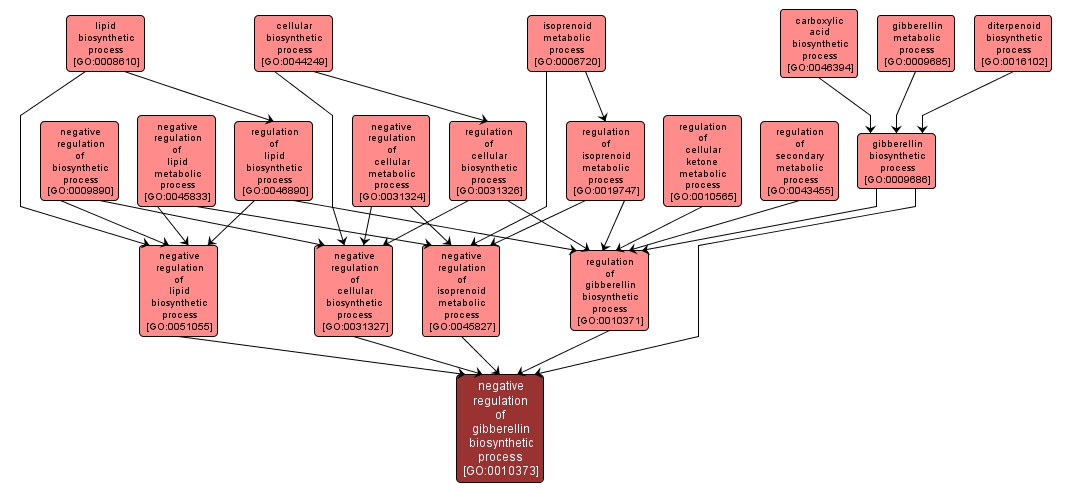GO TERM SUMMARY
|
| Name: |
negative regulation of gibberellin biosynthetic process |
| Acc: |
GO:0010373 |
| Aspect: |
Biological Process |
| Desc: |
Any process that stops, prevents, or reduces the frequency, rate or extent of the chemical reactions and pathways resulting in the formation of gibberellins. |
Synonyms:
- negative regulation of gibberellic acid biosynthetic process
|
|

|
INTERACTIVE GO GRAPH
|














